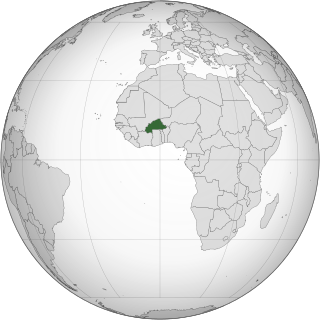
The LGBTQ community is a loosely defined grouping of lesbian, gay, bisexual, transgender, and queer or questioning individuals united by a common culture and social movements. These communities generally celebrate pride, diversity, individuality, and sexuality. LGBTQ activists and sociologists see LGBTQ community-building as a counterweight to heterosexism, homophobia, biphobia, transphobia, sexualism, and conformist pressures that exist in the larger society. The term pride or sometimes gay pride expresses the LGBTQ community's identity and collective strength; pride parades provide both a prime example of the use and a demonstration of the general meaning of the term. The LGBTQ community is diverse in political affiliation. Not all people who are lesbian, gay, bisexual, or transgender consider themselves part of the LGBTQ community.

Egale Canada is a Canadian charity founded in 1986 by Les McAfee to advance equality for Canadian lesbian, gay, bisexual and transgender (LGBTQ) people and their families, across Canada.

Lesbian, gay, bisexual, transgender, and queer (LGBTQ) people in Burkina Faso face legal issues not experienced by non-LGBTQ citizens. Although same-sex sexual acts are legal for both men and women in Burkina Faso, there is no legal recognition of same-sex marriage or adoption rights.

The rights of lesbian, gay, bisexual, transgender, and queer (LGBTQ) people in the United States are among the most advanced in the world, with public opinion and jurisprudence changing significantly since the late 1980s.

Lesbian, gay, bisexual, and transgender (LGBTQ) people in Cambodia face legal challenges not experienced by non-LGBT residents. Although same-sex sexual activity is legal in Cambodia, it provides no anti-discrimination protections for LGBT people, nor does it prohibit hate crimes based on sexual orientation and gender identity.
Various issues in medicine relate to lesbian, gay, bisexual, transgender and queer (LGBTQ) people. According to the US Gay and Lesbian Medical Association (GLMA), besides HIV/AIDS, issues related to LGBTQ health include breast and cervical cancer, hepatitis, mental health, substance use disorders, alcohol use, tobacco use, depression, access to care for transgender persons, issues surrounding marriage and family recognition, conversion therapy, refusal clause legislation, and laws that are intended to "immunize health care professionals from liability for discriminating against persons of whom they disapprove."
Research has found that attempted suicide rates and suicidal ideation among lesbian, gay, bisexual, transgender and queer (LGBTQ) youth are significantly higher than among the general population.
Services and Advocacy for Gay, Lesbian, Bisexual, and Transgender Elders (SAGE) is America's oldest and largest non-profit organization dedicated to improving the lives of lesbian, gay, bisexual, transgender and queer or questioning (LGBTQ+) older people, focusing on the issue of LGBTQ+ aging. According to its mission statement, "SAGE leads in addressing issues related to lesbian, gay, bisexual, transgender, queer and questioning aging. In partnership with its constituents and allies, SAGE works to achieve a high quality of life for LGBTQ+ older people, supports and advocates for their rights, fosters a greater understanding of aging in all communities, and promotes positive images of LGBTQ+ life in later years." SAGE is a 501(c)(3) organization that focuses on advocacy on the local and federal levels, as well as activities, groups, and programs that encourage LGBTQ+ older people to stay connected with each other and the community.

The U.S. state of New York has generally been seen as socially liberal in regard to lesbian, gay, bisexual, and transgender (LGBTQ) rights. LGBT travel guide Queer in the World states, "The fabulosity of Gay New York is unrivaled on Earth, and queer culture seeps into every corner of its five boroughs". The advocacy movement for LGBT rights in the state has been dated as far back as 1969 during the Stonewall riots in New York City. Same-sex sexual activity between consenting adults has been legal since the New York v. Onofre case in 1980. Same-sex marriage has been legal statewide since 2011, with some cities recognizing domestic partnerships between same-sex couples since 1998. Discrimination protections in credit, housing, employment, education, and public accommodation have explicitly included sexual orientation since 2003 and gender identity or expression since 2019. Transgender people in the state legally do not have to undergo sex reassignment surgery to change their sex or gender on official documents since 2014. In addition, both conversion therapy on minors and the gay and trans panic defense have been banned since 2019. Since 2021, commercial surrogacy has been legally available within New York State. In 2024, the Constitution of New York was amended to explicitly ban discrimination on the basis of gender identity and sexual orientation.

Lesbian, gay, bisexual, and transgender, and queer (LGBTQ) people in the U.S. state of Oregon have the same legal rights as non-LGBTQ people. Oregon became one of the first U.S. jurisdictions to decriminalize sodomy in 1972, and same-sex marriage has been legal in the state since May 2014 when a federal judge declared the state's ban on such marriages unconstitutional. Previously, same-sex couples could only access domestic partnerships, which guaranteed most of the rights of marriage. Additionally, same-sex couples are allowed to jointly adopt, and discrimination based on sexual orientation and gender identity in the areas of employment, housing and public accommodations is outlawed in the state under the Oregon Equality Act, enacted in 2008. Conversion therapy on minors is also illegal.

The demographics of sexual orientation and gender identity in the United States have been studied in the social sciences in recent decades. A 2023 Gallup poll concluded that 7.6% of adult Americans identified as LGBTQ+. A different survey in 2016, from the Williams Institute, estimated that 0.6% of U.S. adults identify as transgender. As of 2022, estimates for the total percentage of U.S. adults that are transgender or nonbinary range from 0.5% to 1.6%. Additionally, a Pew Research survey from 2022 found that approximately 5% of young adults in the U.S. say their gender is different from their sex assigned at birth.

Lesbian, gay, bisexual, transgender, and queer (LGBTQ) people in the U.S. state of Arizona may face legal challenges not experienced by non-LGBTQ residents. Same-sex sexual activity is legal in Arizona, and same-sex couples are able to marry and adopt. Nevertheless, the state provides only limited protections against discrimination on the basis of sexual orientation and gender identity. Several cities, including Phoenix and Tucson, have enacted ordinances to protect LGBTQ people from unfair discrimination in employment, housing and public accommodations.
Transgender inequality is the unequal protection received by transgender people in work, school, and society in general. Transgender people regularly face transphobic harassment. Ultimately, one of the largest reasons that transgender people face inequality is due to a lack of public understanding of transgender people.
Research shows that a disproportionate number of homeless youth in the United States identify as lesbian, gay, bisexual, transgender or queer, or LGBTQ. Researchers suggest that this is primarily a result of hostility or abuse from the young people's families leading to eviction or running away. In addition, LGBTQ youth are often at greater risk for certain dangers while homeless, including being the victims of crime, risky sexual behavior, substance use disorders, and mental health concerns.
The United States Veterans Health Administration (VHA) has an LGBTQ+ Program through the Office of Patient Care Services. The “+” sign captures identities beyond LGBTQ, including but not limited to questioning, pansexual, asexual, agender, gender diverse, nonbinary, gender-neutral, and other identities. VHA began collecting data on veteran’s sexual orientation and gender identity in 2022 to inform policy and improve clinical care. There are estimated to be more than one million LGBTQ+ Americans who are military veterans. If LGBTQ+ veterans use VHA at the same rate as non-LGBTQ+ veterans, there could be more than 250,000 LGBTQ+ veterans served by VHA. Using diagnostic codes in medical record data, Blosnich and colleagues found that the prevalence of transgender veterans in VHA (22.9/100,000) is five times higher than reported prevalence of transgender-related diagnoses in the general population (4.3/100,000). Brown and Jones identified 5,135 transgender veterans receiving care in VHA using a broader set of diagnostic codes. Brown also notes that this methodology fails to identify transgender veterans who have not disclosed their gender identity to providers, those who don’t meet criteria for a diagnosis, or veterans who get their transition-related care outside of the VHA.

The following outline offers an overview and guide to LGBTQ topics:

LGBT ageing addresses issues and concerns related to the ageing of lesbian, gay, bisexual and transgender (LGBT) people. Older LGBT people are marginalised by: a) younger LGBT people, because of ageism; and b) by older age social networks because of homophobia, biphobia, transphobia, heteronormativity, heterosexism, prejudice and discrimination towards LGBT people.
Gerodiversity is the multicultural approach to issues of aging. This approach provides a theoretical foundation for the medical and psychological treatment of older adults within an ecological context that includes their cultural identity and heritage, social environment, community, family system, and significant relationships. Gerodiversity encompasses a social justice framework, which considers the social and historical dynamics of privilege and inequality. In addition to issues of aging, gerodiversity includes race, ethnicity, language, gender identity, socioeconomic status, physical ability or disability, sexual orientation, level of education, country of origin, location of residence, and religion or spirituality.

Arnold Schwarzenegger was an early opponent of same-sex marriage in the United States, including during his Governorship of California. As an elected official he opposed legal recognition of same-sex marriage but otherwise he supported LGBT rights legislation, including civil unions.












